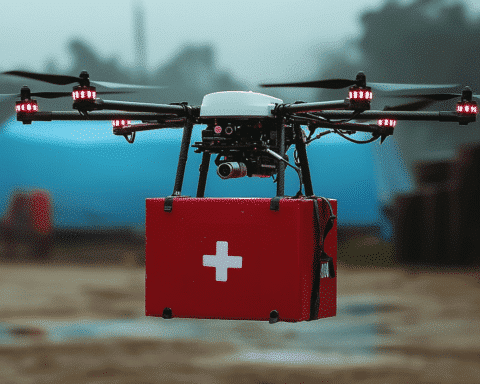In a bid to bolster its defenses against the evolving landscape of modern warfare, the United States Navy is gearing up to test its latest innovation: Project METEOR. This cutting-edge initiative entails the deployment of a high-powered microwave weapon aboard a naval vessel by the year 2026.
Project METEOR represents a significant leap forward in the realm of directed energy systems, a category of weapons designed to neutralize targets without the need for traditional projectiles. At its core, METEOR harnesses the power of intense electromagnetic energy to incapacitate the electronics of hostile drones, offering a swift and cost-effective countermeasure against these increasingly prevalent threats.
The strategic significance of METEOR lies in its multifaceted capabilities. Designed with a low cost-per-shot, deep magazine, and tactically significant range, this weapon system ensures a versatile and adaptable defense mechanism for naval operations. Moreover, its ability to engage multiple targets simultaneously, coupled with dual deception and defeat capabilities, underscores its effectiveness in combat scenarios.
The impetus behind the development of microwave weapons like METEOR stems from the proliferation of low-cost drones in contemporary conflicts. As exemplified by recent events in regions such as the Russia-Ukraine conflict, Gaza, and the Red Sea crisis, these unmanned aerial vehicles have emerged as potent tools for asymmetrical warfare, posing formidable challenges to conventional military forces.
Of particular concern is the prospect of drone swarms, wherein scores, if not hundreds or thousands, of drones could coordinate attacks with unprecedented precision and efficiency. Such a scenario underscores the urgent need for innovative defense solutions capable of thwarting these evolving threats.
In response to this imperative, the US Navy has turned to directed energy systems, recognizing their potential to deliver unparalleled speed and efficacy in neutralizing hostile drones. Unlike conventional weaponry, which often entails exorbitant costs and logistical challenges, microwave weapons offer a streamlined and cost-effective means of defense.
The underlying principle of directed energy, as elucidated by experts, lies in its extraordinary speed. Travelling at the speed of light, electromagnetic radiation renders traditional hypersonic threats pale in comparison, offering a decisive advantage in the realm of modern warfare.
While the United States leads the charge in developing advanced directed energy systems, other nations are not far behind. The United Kingdom, for instance, has unveiled its own iteration of directed energy weaponry, the DragonFire system. This formidable arsenal features a giant laser gun capable of targeting airborne threats with pinpoint accuracy, demonstrating the global momentum behind this transformative technology.
As the threat landscape continues to evolve, propelled by rapid technological advancements and geopolitical shifts, the imperative for robust defense capabilities becomes ever more pronounced. Project METEOR stands as a testament to the US Navy’s commitment to innovation and adaptability in the face of emerging challenges, ensuring that it remains at the forefront of maritime security in an era defined by uncertainty and complexity.
In the years to come, as directed energy systems like METEOR become increasingly integrated into naval operations, they are poised to redefine the dynamics of modern warfare, offering a potent deterrent against emerging threats and safeguarding the interests of nations across the globe.




